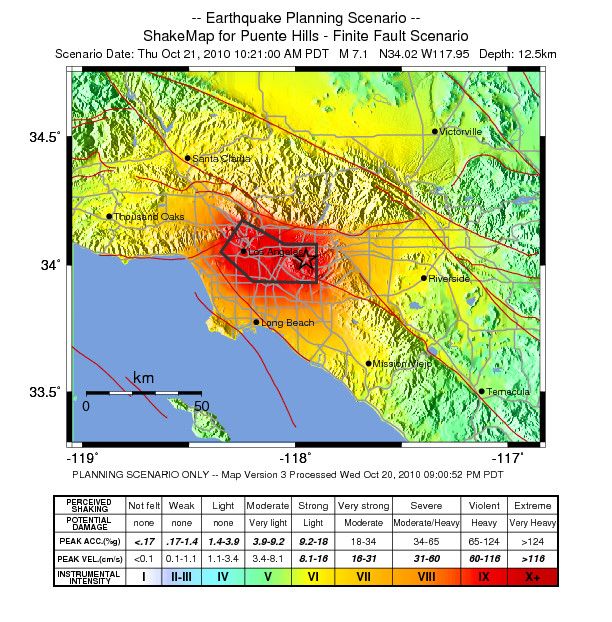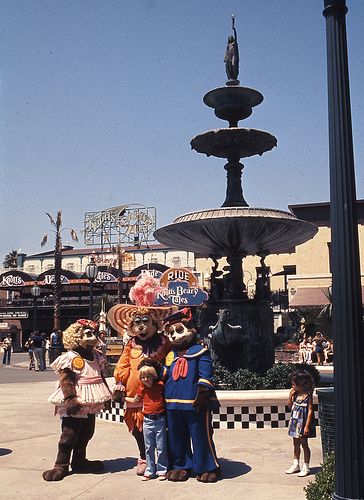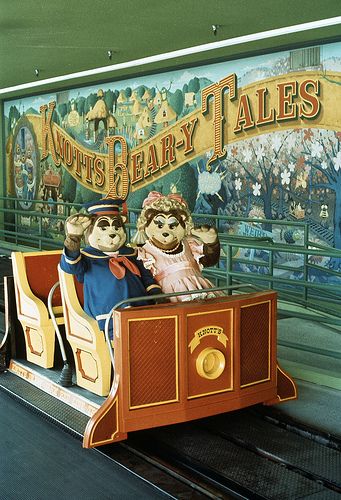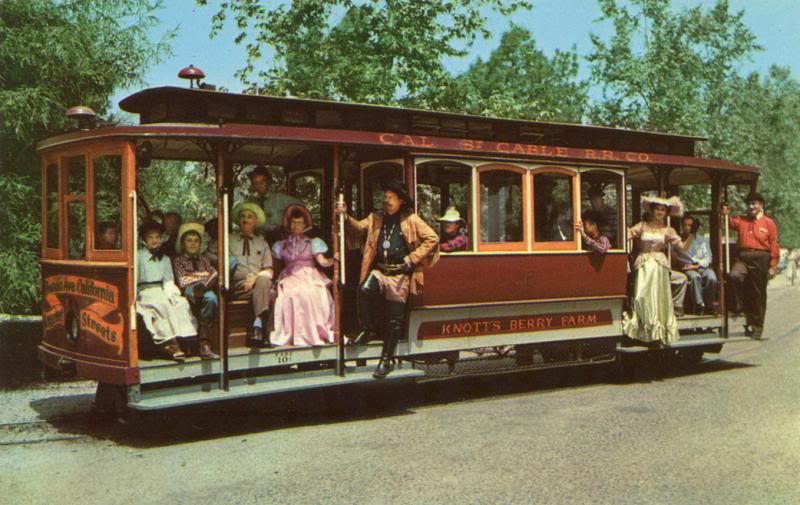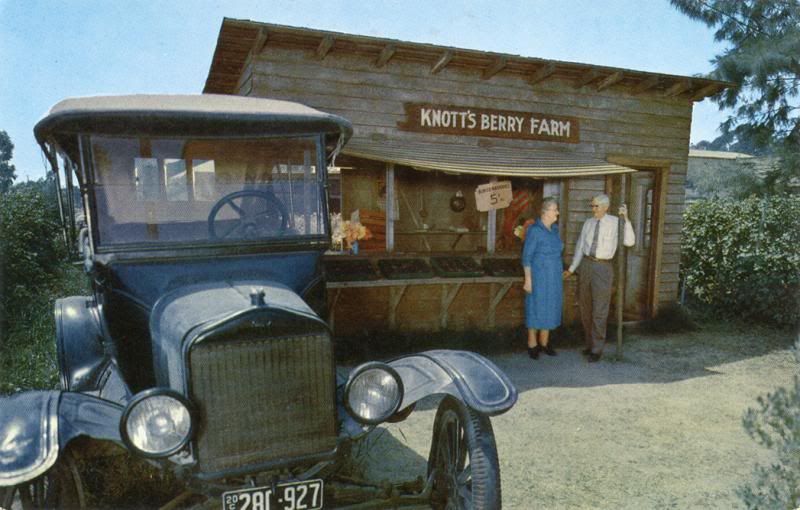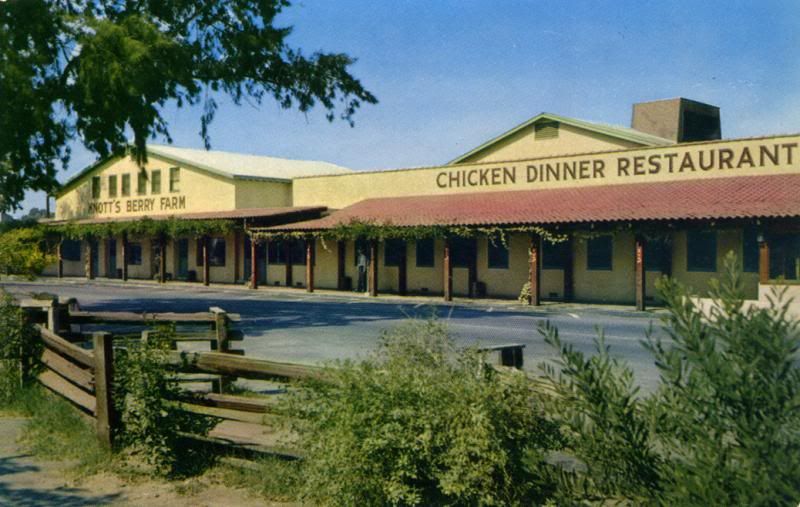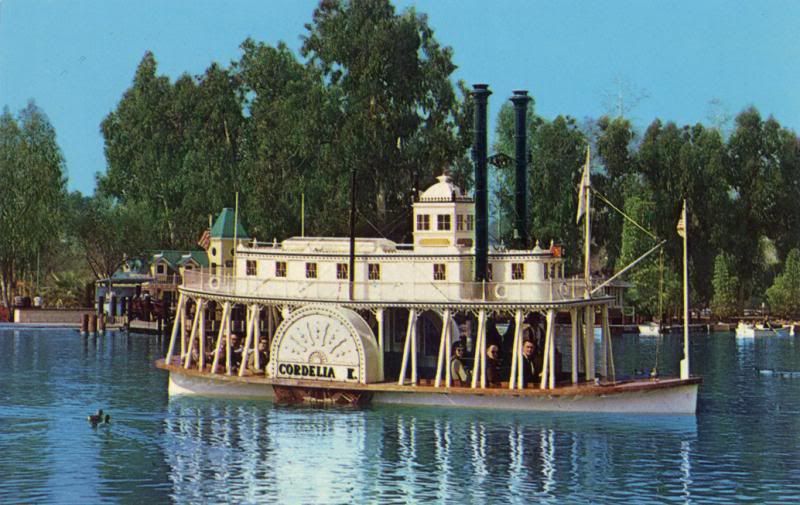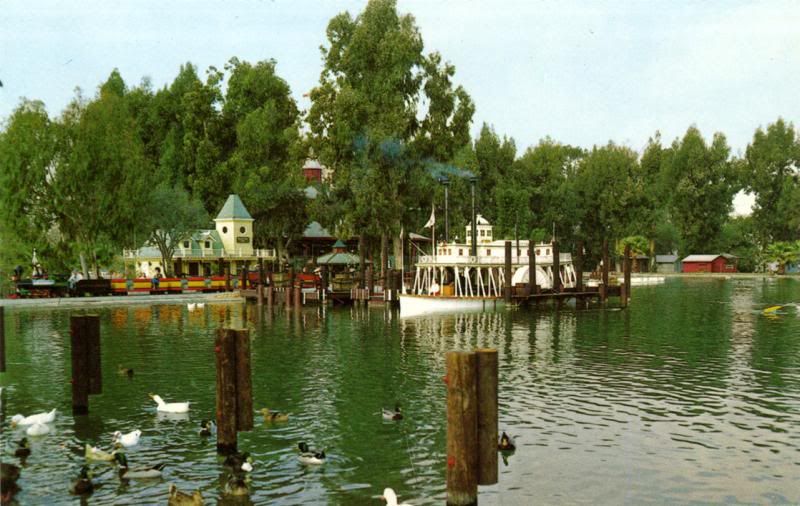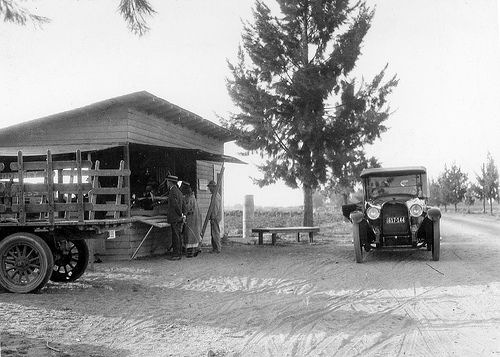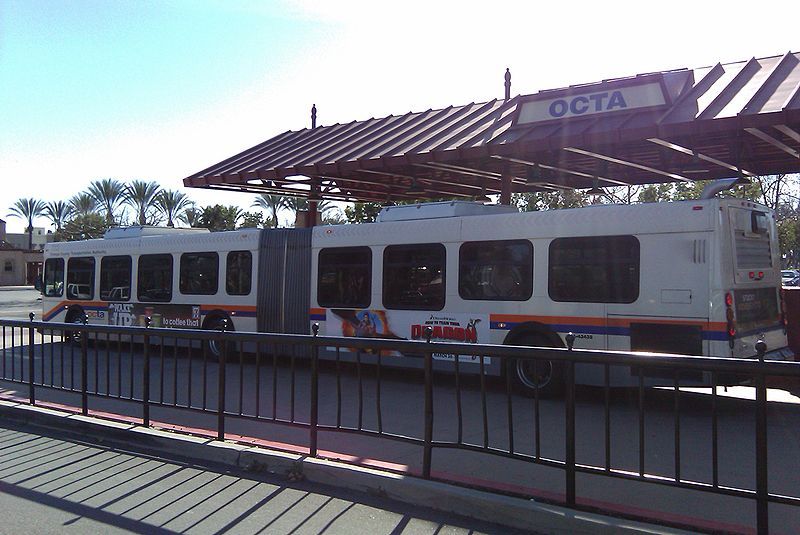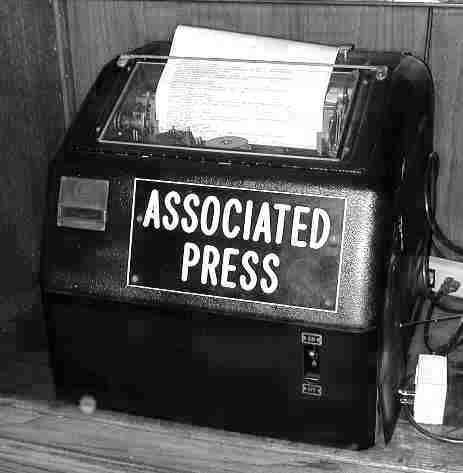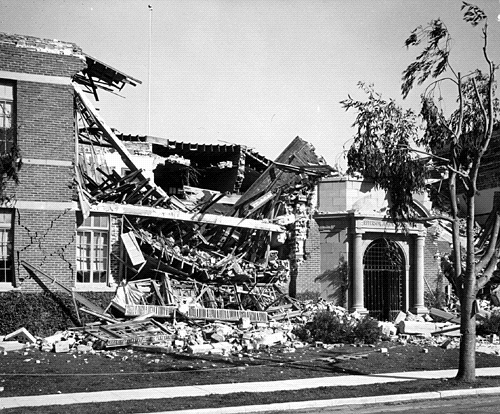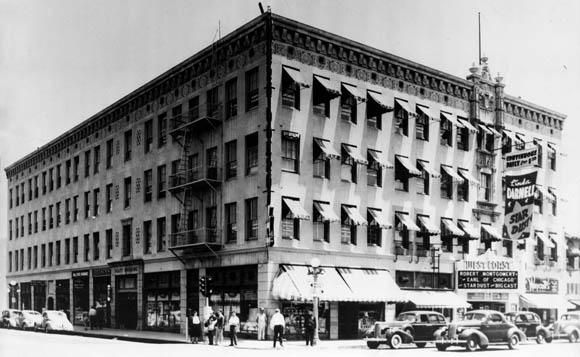STUCK ON THE ORANGE CRUSH INTERCHANGE - We would like to think public transportation is finally coming into its own in Southern California, but let us face it, the freeway is still king. For a lot of us the freeway defines our way life, and that is not going to change anytime soon. So, here are the top 11 (some good, some bad) interesting freeways in Southern California.
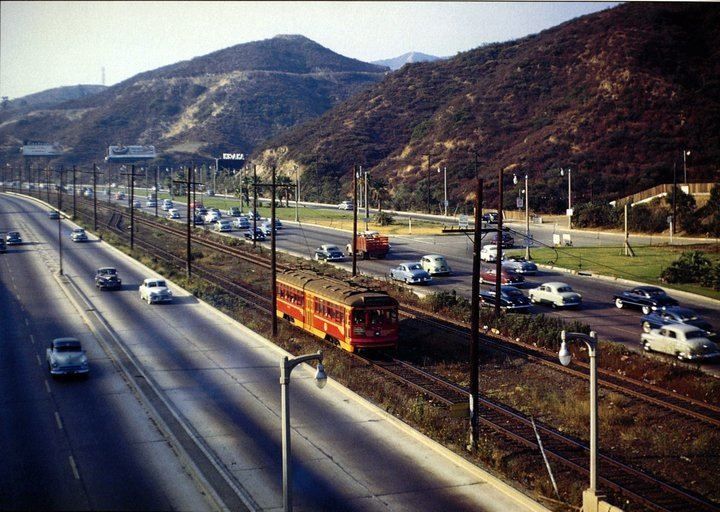
The Cahuenga Pass once upon a time. Date and author unknown. No copyright infringement intended.
#11 - The Marina Freeway - State Route (SR) 90
Otherwise known as the Westside Wang this has to be one of the most useless freeways in Southern California, and does not seem to serve any real purpose unless you need to get from the Westfield Culver City mall (formerly called Fox Hills Mall) to Marina Del Rey in your Chevrolet right away.
#10 - The Chino Hills Freeway - SR 71
While driving alongside Chino Hills State Park makes for a nice scenic drive The Chino Hills Freeway is not too sure if it wants to be a freeway, highway or wide boulevard. Adding to the 71's identity crisis is the name, because until somewhat recently it was known as the Corona Expressway, and before that it was called the Temescal Freeway.
#9 - "The 91"
The 91 has one of the worst commutes in the country, because for a few miles through Santa Ana Canyon there are no back roads or alternative routes and thus everybody must take this freeway. Like the 71 this freeway too has bit of an identity crisis. Most people know it as The Riverside Freeway, but between the Interstate 5 and the I-710 interchange it is called The Artesia Freeway, and between the I-710 and I-110 it is called The Gardena Freeway.
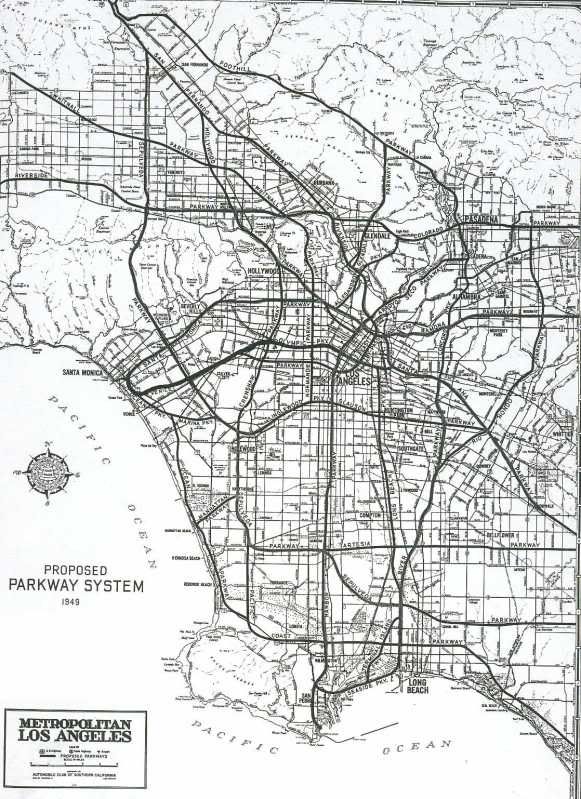
The proposed 1947 parkway plan. Photo courtesy of the Southern California Automobile Club. Used under Creative Commons.
#8 - The Century Freeway - I-105
The last freeway to be competed in the Los Angeles Basin the Century Freeway is a vision of what our freeway system should have been when it was created by adding public transit rail lines along the freeway.

Aerial view of the I-105/I-710 interchange. Date and author unknown; no copyright infringement intended. Used under Creative Commons.
#7 - The Santa Ana Freeway - I-5
The most direct route between L.A. and Orange County embodies everything wrong with post-War Southern California suburban sprawl. While cities and developers were more than happy to build tract-homes and malls for as far as the eye can see the powers that be never saw to it to expand the 5 to accompany the growth until it was way too late.
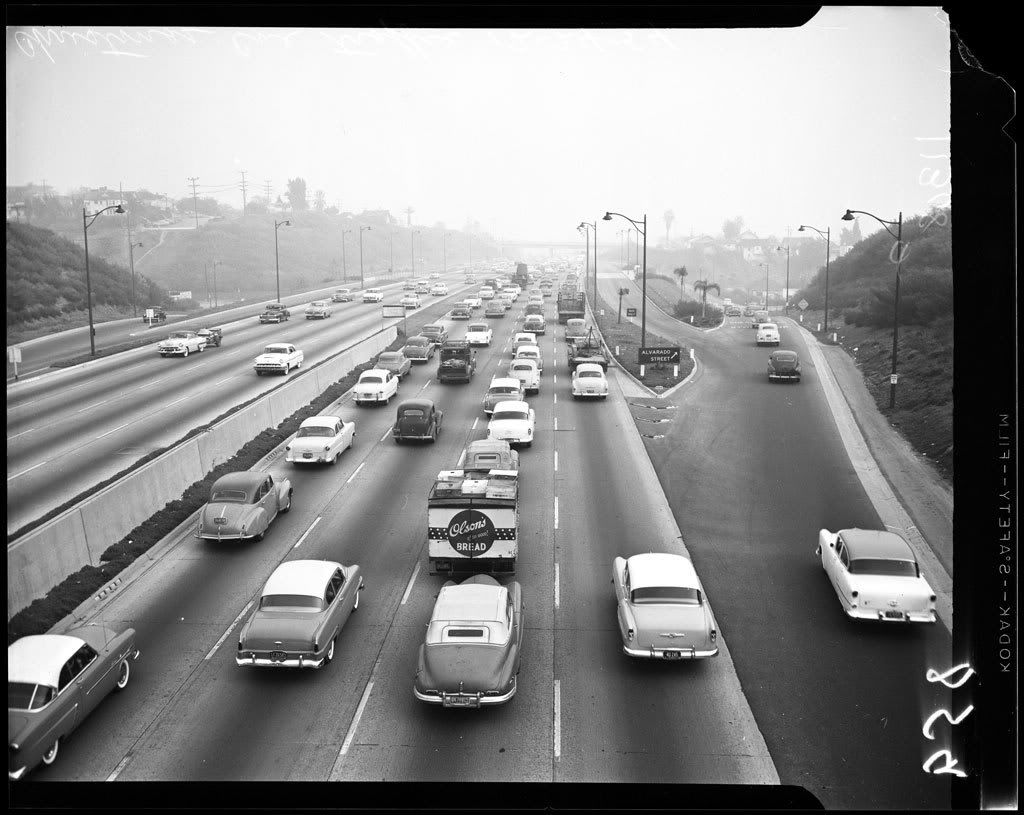
Not the 5, but a 1954 photograph of The Hollywood Freeway, and although the style of cars have changed the traffic jam remains the same. Used under Creative Commons.
#6 - The Pomona Freeway - SR 60
On those off days when there is little traffic and it is clear and bright the 60 through the San Gabriel Valley actually makes for a nice drive with the green hills to the south of the freeway almost looking like the Pacific Northwest. Yet one cannot help but wonder that it would have made more sense to call the 60 The Riverside Freeway since it connects between downtown Riverside and Downtown L.A.
#5 - The San Gabriel River Freeway - I-605
While it is very convenient for people who live and/or work off the 605, but for an interstate freeway this feels like it does not have any real destination, and that it is kind of just "there," but there is something interesting about this freeway. The 605 goes from the foot of the mountains down to the foot of the ocean, and it is really the only freeway in Southern California that kind of does this.
#4 - The Harbor Freeway - I-110
Aside from going through the heart of L.A. the Harbor Freeway offers some of the best views of Downtown L.A.
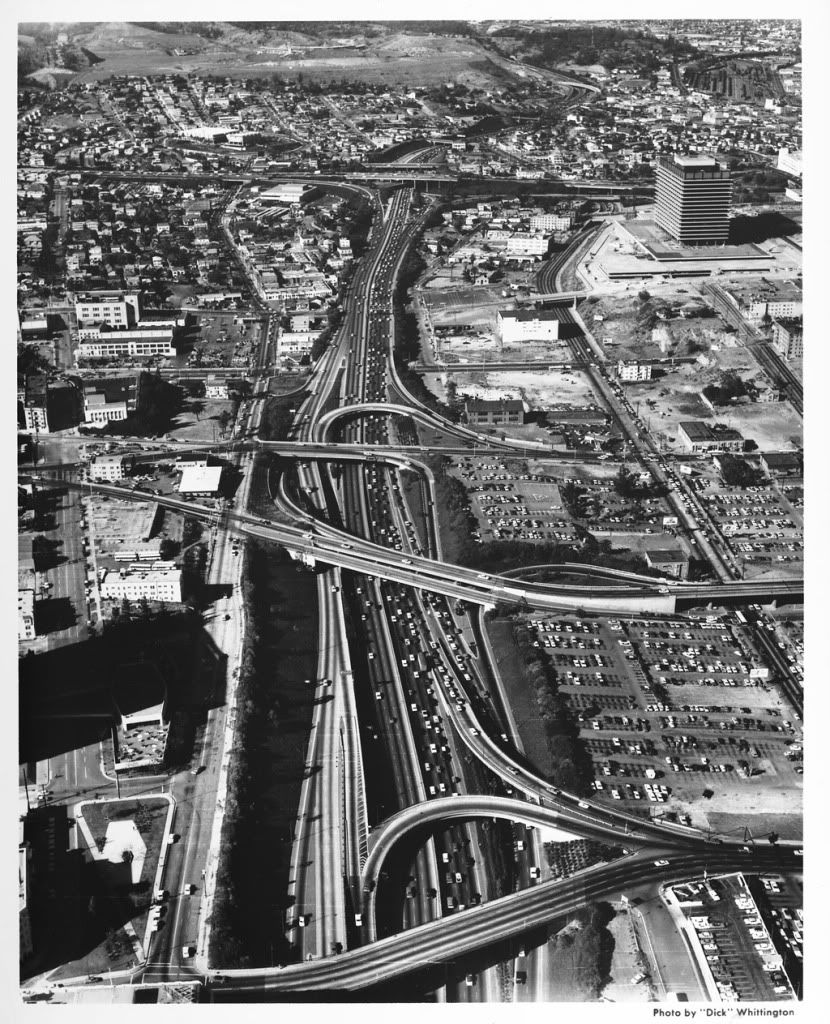
The Harbor Freeway through Downtown L.A. in 1964 in a photograph by the great "Dick" Whittington. Used for information purposes; no copyright infringement intended.
#3 - The Glendale Freeway - SR 2
Would not it be ironic if Cal-Trans renamed the 2 The Hipster Freeway given that this freeway goes through some of L.A.'s hip neighborhoods and it is kind of an awkward freeway? That aside The Glendale Freeway southern terminus ends somewhat awkwardly in Echo Park as it is the uncompleted Beverly Hills Freeway. This uncompleted freeway stands as a testament to money and power in L.A. as East L.A. and South L.A. residents were not able to stop massive freeway construction in their neighborhoods, but Hancock Park and Beverly Hills residents waved their magic paper green wands to make this freeway go away. (Interestingly then Governor Ronald Reagan supported completing the 2 to Beverly Hills.)
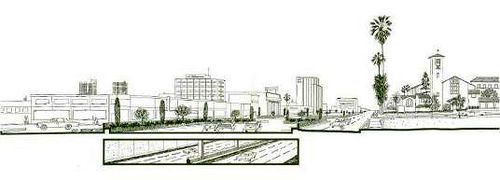
What could have been, a 1964 drawing of the proposed Beverly Hills Freeway. Photograph courtesy Metro Transportation Library and Archive.
#2 - The I-5 From L.A. to Tijuana
Despite the problems with the 5 it is exciting to think this freeway can take you from Downtown L.A. to another country in (traffic pending) around 90 minutes. How... European.
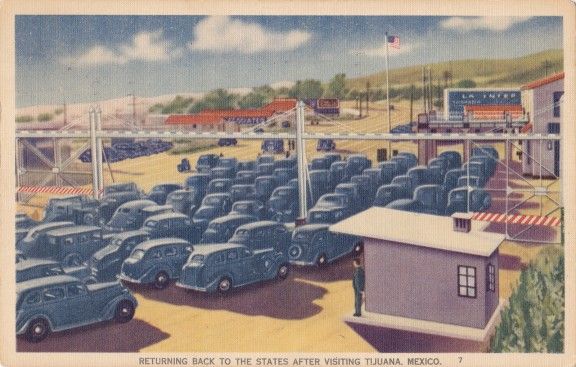
Postcard dated 1945 showing the old border crossing in Tijuana/San Diego.
#1 - The Arroyo Seco Parkway - SR 110
For some people who first experience this freeway, err parkway, it is kind of like a rare fine wine. It kind of takes you by surprise and it takes a moment to settle in, but once it settles in you realize this is one of the most beautiful freeways, excuse me, parkways. in the country. If you have to live life on the freeway The Arroyo Seco Parkway makes it all worth it.
 Late 1950s photograph of the Arroyo Seco Parkway. Author unknown. Used under Creative Commons.
Late 1950s photograph of the Arroyo Seco Parkway. Author unknown. Used under Creative Commons.

The Cahuenga Pass once upon a time. Date and author unknown. No copyright infringement intended.
#11 - The Marina Freeway - State Route (SR) 90
Otherwise known as the Westside Wang this has to be one of the most useless freeways in Southern California, and does not seem to serve any real purpose unless you need to get from the Westfield Culver City mall (formerly called Fox Hills Mall) to Marina Del Rey in your Chevrolet right away.
#10 - The Chino Hills Freeway - SR 71
While driving alongside Chino Hills State Park makes for a nice scenic drive The Chino Hills Freeway is not too sure if it wants to be a freeway, highway or wide boulevard. Adding to the 71's identity crisis is the name, because until somewhat recently it was known as the Corona Expressway, and before that it was called the Temescal Freeway.
#9 - "The 91"
The 91 has one of the worst commutes in the country, because for a few miles through Santa Ana Canyon there are no back roads or alternative routes and thus everybody must take this freeway. Like the 71 this freeway too has bit of an identity crisis. Most people know it as The Riverside Freeway, but between the Interstate 5 and the I-710 interchange it is called The Artesia Freeway, and between the I-710 and I-110 it is called The Gardena Freeway.

The proposed 1947 parkway plan. Photo courtesy of the Southern California Automobile Club. Used under Creative Commons.
#8 - The Century Freeway - I-105
The last freeway to be competed in the Los Angeles Basin the Century Freeway is a vision of what our freeway system should have been when it was created by adding public transit rail lines along the freeway.

Aerial view of the I-105/I-710 interchange. Date and author unknown; no copyright infringement intended. Used under Creative Commons.
#7 - The Santa Ana Freeway - I-5
The most direct route between L.A. and Orange County embodies everything wrong with post-War Southern California suburban sprawl. While cities and developers were more than happy to build tract-homes and malls for as far as the eye can see the powers that be never saw to it to expand the 5 to accompany the growth until it was way too late.

Not the 5, but a 1954 photograph of The Hollywood Freeway, and although the style of cars have changed the traffic jam remains the same. Used under Creative Commons.
#6 - The Pomona Freeway - SR 60
On those off days when there is little traffic and it is clear and bright the 60 through the San Gabriel Valley actually makes for a nice drive with the green hills to the south of the freeway almost looking like the Pacific Northwest. Yet one cannot help but wonder that it would have made more sense to call the 60 The Riverside Freeway since it connects between downtown Riverside and Downtown L.A.
#5 - The San Gabriel River Freeway - I-605
While it is very convenient for people who live and/or work off the 605, but for an interstate freeway this feels like it does not have any real destination, and that it is kind of just "there," but there is something interesting about this freeway. The 605 goes from the foot of the mountains down to the foot of the ocean, and it is really the only freeway in Southern California that kind of does this.
#4 - The Harbor Freeway - I-110
Aside from going through the heart of L.A. the Harbor Freeway offers some of the best views of Downtown L.A.

The Harbor Freeway through Downtown L.A. in 1964 in a photograph by the great "Dick" Whittington. Used for information purposes; no copyright infringement intended.
#3 - The Glendale Freeway - SR 2
Would not it be ironic if Cal-Trans renamed the 2 The Hipster Freeway given that this freeway goes through some of L.A.'s hip neighborhoods and it is kind of an awkward freeway? That aside The Glendale Freeway southern terminus ends somewhat awkwardly in Echo Park as it is the uncompleted Beverly Hills Freeway. This uncompleted freeway stands as a testament to money and power in L.A. as East L.A. and South L.A. residents were not able to stop massive freeway construction in their neighborhoods, but Hancock Park and Beverly Hills residents waved their magic paper green wands to make this freeway go away. (Interestingly then Governor Ronald Reagan supported completing the 2 to Beverly Hills.)

What could have been, a 1964 drawing of the proposed Beverly Hills Freeway. Photograph courtesy Metro Transportation Library and Archive.
#2 - The I-5 From L.A. to Tijuana
Despite the problems with the 5 it is exciting to think this freeway can take you from Downtown L.A. to another country in (traffic pending) around 90 minutes. How... European.

Postcard dated 1945 showing the old border crossing in Tijuana/San Diego.
#1 - The Arroyo Seco Parkway - SR 110
For some people who first experience this freeway, err parkway, it is kind of like a rare fine wine. It kind of takes you by surprise and it takes a moment to settle in, but once it settles in you realize this is one of the most beautiful freeways, excuse me, parkways. in the country. If you have to live life on the freeway The Arroyo Seco Parkway makes it all worth it.
 Late 1950s photograph of the Arroyo Seco Parkway. Author unknown. Used under Creative Commons.
Late 1950s photograph of the Arroyo Seco Parkway. Author unknown. Used under Creative Commons.